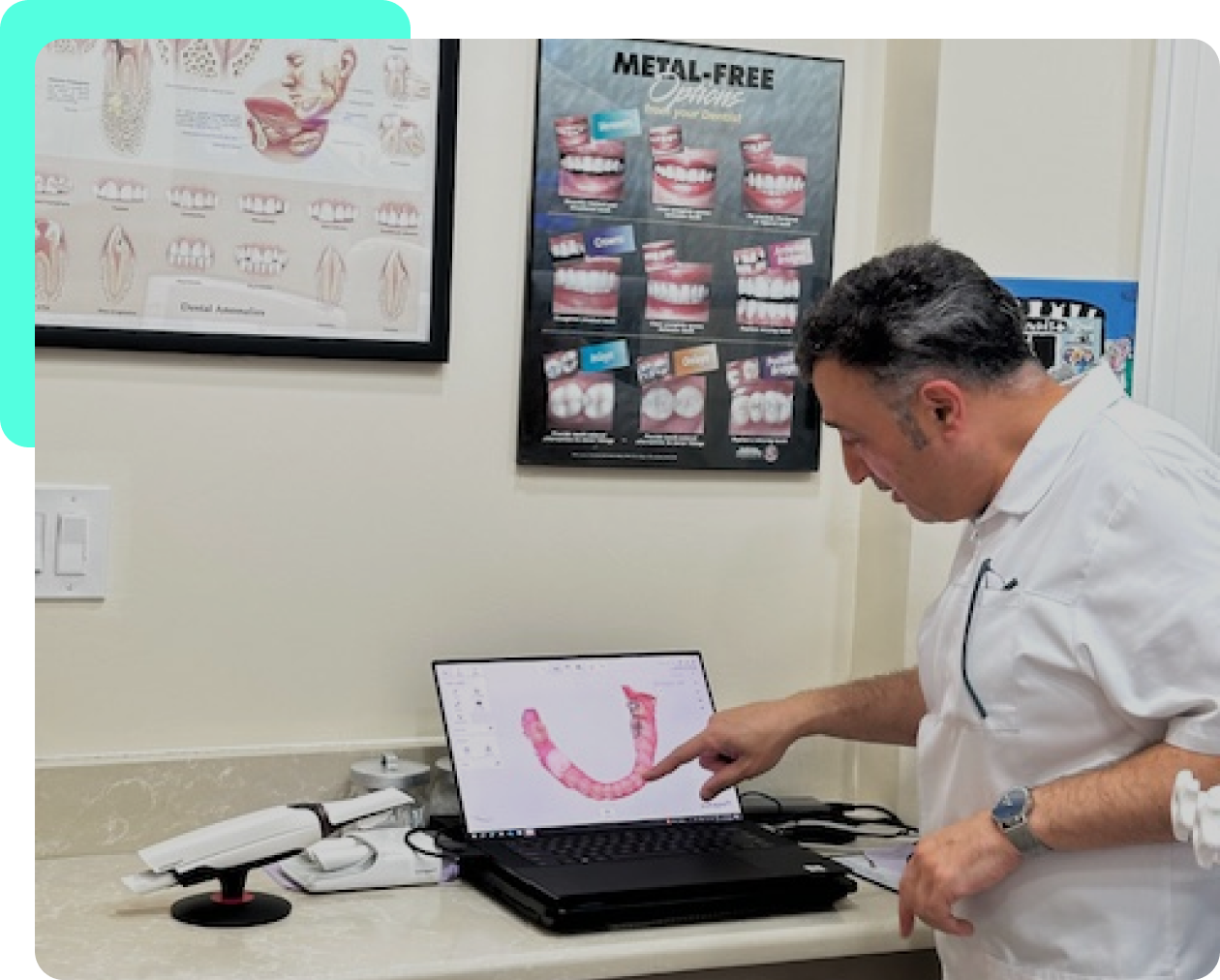

Dental bridges literally bridge the gap created by one or more missing teeth. Traditional bridges involve creating a crown for the tooth or implant on either side of the missing tooth, with a false tooth/teeth in between.
Bridges can:
During the first visit for getting a dental bridge, the abutment teeth are prepared. Preparation involves recontouring these teeth by removing a portion of enamel to allow room for a crown to be placed over them. Next, impressions of the teeth are made, which serve as a model from which the bridge, pontic, and crowns will be made by a dental lab. Your dentist will make a temporary bridge to wear to protect the exposed teeth and gums while the bridge is being made.



During the second visit, your temporary bridge will be removed and the new porcelain or metal bridge will be checked and adjusted, as necessary, to achieve a proper fit. Multiple visits may be required to check the fit of the metal framework and bite. This is dependent on each individual’s case. If the dental bridge is a fixed bridge, your dentist may temporarily cement it in place for a couple of weeks to make sure it is fitting properly. After a couple weeks, the bridge is cemented into place.
A composite filling is a tooth-coloured resin and glass mixture used to restore decayed or broken teeth. By using enamel and dentin bonding techniques, white fillings restore teeth that have become damaged as a result of tooth decay or injury. White fillings are used as an alternative to amalgam (silver) fillings, which are aesthetically poor and contain mercury.
After removing plaque, tartar, decay and any existing filling, the treatment site is cleaned and then dried. To aid the bonding, the tooth surface is etched and coated with a gel and bonding solution. Once prepared, the white filling material is placed into the tooth cavity, or area to be filled, and then moulded to match the tooth contours. A curing light is then used to harden the filling before it is trimmed and polished to look like a natural part of your tooth.
Tooth whitening lightens teeth and helps to remove stains and discoloration. Whitening is among the most popular cosmetic dental procedures because it can greatly improve how your teeth look. Most dentists perform tooth whitening.

The outer layer of a tooth is called the enamel. The color of natural teeth is created by the reflection and scattering of light off the enamel, combined with the color of the dentin under it. Your genes affect the thickness and smoothness of the enamel. Thinner enamel allows more of the color of the dentin to show through. Having smoother or rougher enamel also affects the reflection of light and therefore the color.
Every day, a thin coating (pellicle) forms on the enamel and picks up stains. Tooth enamel also contains pores that can hold stains.




Not taking goodaThere are two main types of whitening procedures. Vital whitening is performed on teeth that have live nerves. Non-vital whitening is done on a tooth that has had root-canal treatment and no longer has a live nerve. care of your teeth.
Professional Association


We offer special pricing for senior patients for most procedures. Please give us a Call if you have any questions.

Yes, we’re taking on new patients now! Come and visit us and we’ll talk about your dental needs, cosmetic goals, and more…

Best Package For You
$195